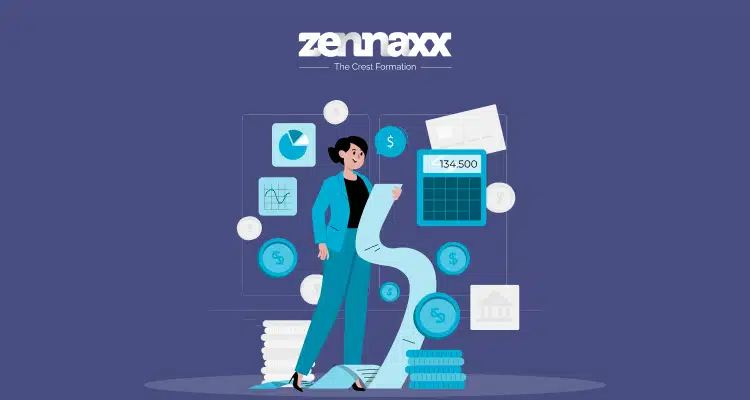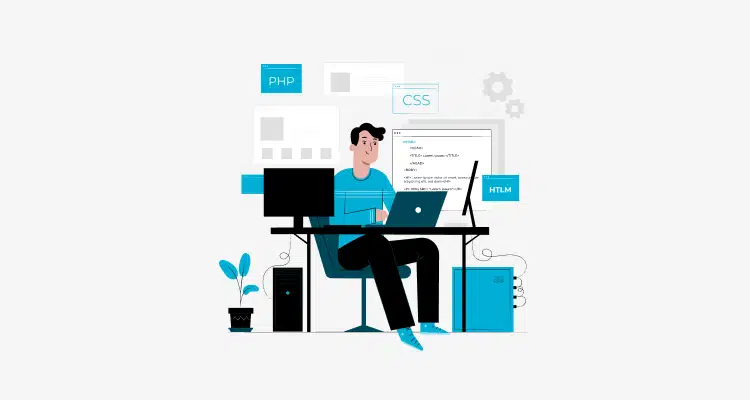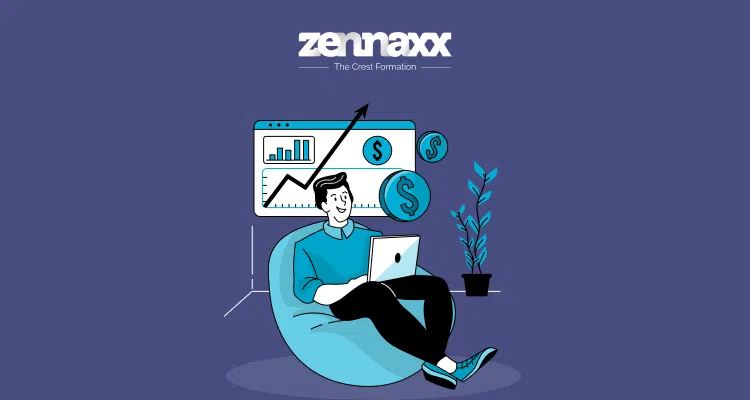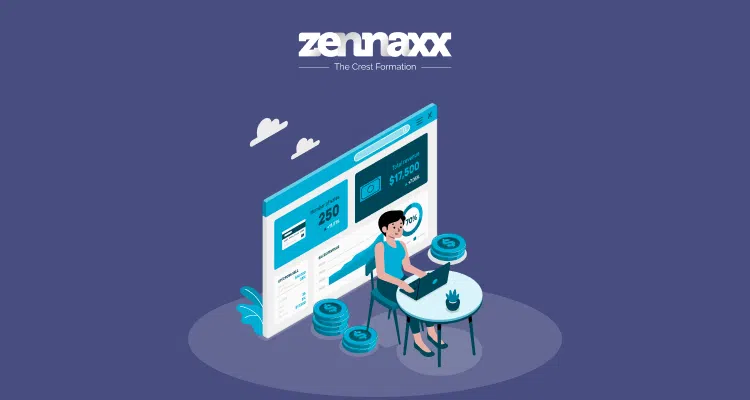Estimating the time and cost of developing new custom software is complex for businesses.
It isn’t very easy for many new companies to determine the exact amount of time and price necessary for creating a new software product.
But does it have to be this hard, or do you need the right strategy to solve it?
This is perhaps due to the structure of each project, which is often unique: no software project is similar to the other, for each has its specific objectives and many factors around its development.
An important part of the cost of making software is that each factor is unique to software development.
You may have many more questions about how to calculate the cost of custom software development than just the cost itself.
To answer these questions, let’s look at some prerequisites that are necessary to calculate the cost.
For a better understanding of development cost estimation, read the Adaptive Software Development Guide before we start.
Let us now look at the most important things that must be in place before we can accurately estimate how much software will cost you in 2024.
Statistics
- The global software development market is massive and expected to reach a staggering $1.03 trillion by 2027, reflecting a healthy Compound Annual Growth Rate (CAGR) of 25.54%.
- This growth is mirrored by the IT sector as a whole, which is projected to surpass pre-pandemic levels by 2024 with a CAGR of 5%.
- When it comes to project focus, the majority (84.7%) of software development revolves around enterprise applications, with business automation (53.6%) and e-commerce (38.5%) taking the lead.
- The global developer population is booming, reaching an estimated 26.9 million in 2023 and is expected to hit 28.7 million by 2024, a significant increase of 3.2 million. The United States alone boasts an impressive 4.3 million developers.
- Outsourcing software development remains a popular strategy for businesses, with a global market exceeding $4.4 trillion in 2022.
Prerequisites to Estimate the Software Development Cost
Talking about important requirements during scoping sessions when working with a software development company is very important.
Zennaxx is a professional organization that will walk you through the entire process, from outlining your project’s objectives to discussing ways to make money.
As per our decades of experience in software development, we advise you to make these three things clear on paper before starting to work on your software.
A. Project Goals
The first step is to explain your project goals clearly. A well-defined goal helps design software that meets your needs and stays within budget.
It also keeps the development team focused and aligned with your vision. The more specific the goal, the faster the development process, leading to greater software development costs.
B. Target Audience
Software development success depends on knowing your target audience and market. This group is usually made up of people who want your products or services.
Conducting extensive market research, competitor analysis, and identifying current trends will provide you with a clear picture of your intended audience.
The effort and time invested in this step will impact the overall cost of the software development.

C. Types of Software
Know what kind of software you need before you get a rough idea of how long and how much it will cost to develop software.
Time and money will naturally be required for more complicated software with more features.
The investment is worth it, though, because making software that works well together and has many features can give you an edge in the market.
Some Popular Software Types And Their Cost Estimates
We create custom software solutions for specific business needs. Organizations are able to increase productivity and simplify operations with their help.
Here are some of the most common types of custom software solutions and their expected costs:
1. Content Management Systems (CMS)
Businesses can create and update various content types, including blogs, press releases, videos, and so on, with the help of a custom content management system (CMS) designed according to a user’s specific requirements.
Examples: WordPress, Joomla, Wix, and Ghost
Estimated Costs: $35,000 – $80,000 Average
2. Customer Relationship Management Systems (CRM)
CRM systems assist in tracking customer relationships, attracting new clients, and managing vendor and partner interactions.
Custom CRM systems are more useful for large organizations with a specific target audience and complex business operations.
Examples: Salesforce, HubSpot
Cost Estimates: $35,000 – $300,000
3. Enterprise Resource Planning Systems (ERP)
ERP software enables businesses to manage their daily activities, such as procurement, inventory, supply chain, accounting, logistics, and risk management.
Productivity can be improved through custom ERP solutions, which also help make better decisions by reducing mistakes and ensuring automation for task centralization.
Examples: SAP ERP, Oracle ERP Cloud
Cost Estimates: $50,000 to $300,000
4. SaaS (Software-as-a-Service) Products
A third-party cloud service provider hosts applications as part of the SaaS model of software distribution, which makes them accessible to users online.
Examples: Slack, Asana, DropBox, MailChimp
Cost Estimates: $100,000 to $250,000
5. E-commerce Platforms
Custom e-commerce platforms are tailored to specific business needs, enabling seamless online transactions, inventory management, and customer service.
These platforms can support various business models, from B2B to B2C, and can be integrated with other systems like CRM and ERP for enhanced functionality.
Examples: Shopify, WooCommerce, BigCommerce
Cost Estimates: $20,000 to $150,000
You can get different kinds of custom software solutions, and each one can have a big effect on how well and efficiently your business runs.
Once you know what your business wants and needs, you can pick the right software and buy a product that will give you the best return on your money. check out detailed guide on Ecommerce website development Cost.
Factors That Affect Software Development Costs
Some important factors affect the total cost of software development, making it hard to estimate.
We need to understand these factors to make an accurate estimate and prepare the project plan.
Let’s go over the primary elements that impact the estimate of software development costs.
Type of Software Project
Your software project’s basic structure has a big impact on how much it costs. What are the primary categories of software development?
New Software Development
Developing new software, including specialized solutions for individual companies, is part of this process.
From basic apps to elaborate systems tailored to specific needs, new software development covers the gamut.
Everything from conceptualization and planning to development, testing, and launch is part of the scope of work.
Software Modification
Improvement of current software in order to add new features, fix bugs, or increase functionality.
For this kind of project, the main goal is to change and improve existing software systems to meet new needs or fix problems.
New features could be added, performance could be improved, or the user interface could be made better.
The extent of the necessary changes will have a significant impact on the cost of developing software.
Software Integration
Implementing custom code to link existing software to other programs or systems, like adding plugins or changing data between inventory and accounting systems, improves the overall efficiency of the system.
Sometimes, integration projects are hard because the systems involved aren’t compatible or are very complicated.

Web Development
Creating customized web-based applications and platforms. Websites, web apps, and other web-based programs with many functions are all included.
Many web development projects need specific knowledge of web technologies, and they can be very different in terms of size and difficulty.
Each type of software project needs a different set of skills and resources to be developed, which has a direct effect on the total cost of software development.
Before you can make an accurate cost estimate, you need to know what kind of project you have.
1. Size of the Project
The features and functionalities of a project typically determine its size, which is another crucial factor. Here’s a breakdown of project sizes and their associated costs:
1.1 Small-sized Development
These projects involve minor changes like bug fixes and UI tweaks, with limited client interaction.
Development projects of a smaller scale are often simple and demand little in the way of manpower.
They concentrate on making minor changes or improvements to an existing system rather than undertaking major overhauls.
Approximate Cost Range: $5,000 – $30,000
1.2 Medium-sized Development
Medium-sized projects have a clear scope and frequently use single-source data applications.
Simple mobile app development and web interface redesign are two examples.
Larger projects need more work than small ones, and they usually have a clear list of deliverables and milestones.
Approximate Cost Range: $20,000 – $100,000
Example: Redefining the UI/UX strategy for Domino’s app, which increased mobile app conversions by 23%.
In this example, the project involved significant improvements to the user interface and user experience, resulting in increased customer engagement and higher conversion rates.
1.3 Large-sized Development
Large projects are hard to understand because they involve massive databases, integrating many systems, and adding more security measures.
These projects frequently necessitate extensive planning and collaboration across multiple teams and departments.
They may also include multi-platform development, such as creating apps for Android, iOS, and web platforms.
Approximate Cost Range: $60,000 – $150,000
2. Enterprise-sized Development
The most extensive and complex projects, enterprise software development involves building robust frameworks to digitally transform entire business processes.
These projects prioritize high security, rigorous error handling, and data integrity.
Enterprise-level software often needs to handle large volumes of data and support numerous users simultaneously.
Approximate Cost Range: $80,000 – $250,000
Enterprise projects usually require a high degree of customization and must be designed to integrate seamlessly with existing enterprise systems.
They often involve significant client interaction and collaboration to ensure that the software meets all business requirements and regulatory standards.
3. Development Team Size (As per Project)
Your development team’s size is one of the most important things that affects how much software development costs after you know what kind of project you have and how big it is.
Your team should have a developer, a project manager, and a QA tester at the very least.
Coding, management, and quality assurance are the backbone of software development, and these positions are crucial to their execution.
Where a developer works has a big effect on how much they get paid per hour. For example, developers in North America tend to charge more than those in Asia or Eastern Europe.
The following roles and their typical hourly rates should be taken into account to guarantee that your team is appropriate for the specific requirements of your project:
- Project Manager: This person keeps the team on track, manages deadlines, and plans the project. The hourly rate is between $50 and $150.
- Business Analyst: Analyzes business requirements to ensure the project aligns with business objectives.
Hourly rates can range from $40 to $120.
- UI/UX Designer: This person creates the experience and user interface. The hourly rate is between $30 and $100.
- Architect: Makes plans for the structure of the software and is in charge of the technical direction. The rates per hour are between $60 and $200.
- Database Expert: Manages database design and optimization. For every hour, it costs between $40 and $140.
- Developer: Writes and maintains code. Hourly rates range from $30 to $150.
- QA Tester: This person tests the software to ensure it is free of bugs and meets quality standards. Hourly rates range from $20 to $80.
Here are some approximate hourly rates for developers in various regions:
- North America: $70 – $150
- Western Europe: $50 – $120
- Eastern Europe: $30 – $80
- Asia: $20 – $50
- Latin America: $30 – $70
You can effectively manage your project’s budget and ensure successful software development by carefully choosing the right mix of roles and knowing how their locations affect costs.
Other Factors That Indirectly Impact the Software Development Cost
When planning the cost of software development, several less obvious factors can impact your budget. You can think of some of these indirect costs as follows:
1. Designing the User Interface (UI) and User Experience (UX)
You have to prioritize the software design for any project. Interfaces and user experiences (UI and UX) that are well thought out make software look attractive.
However, a great design takes time, and testing it demands an expert designer with high costs. You lose more time and money every time you test and modify the design to be better.
Type of Development Team
Who you hire to build your software also affects costs. You have three main options:
2. In-house Team
This means that you should have your own employees make the software.
Because they are so involved with your business, this usually leads to good results, but it’s also the most expensive choice because of salaries, benefits, and other costs.
This is a good choice for long-term projects because everyone works together, which makes it easy to talk to each other.
3. Outsourced Team
You can hire an outside company to do the work for you. The cost is usually lower than hiring a team to work in-house, and they can do good work because they have the right tools and skills.
In-house teams can communicate more directly than with outside teams, but communication via project managers is still common. Detailed Comparison.
4. Freelancers
The cheapest option is to hire freelancers. They may not be part of a dedicated team, though, so the quality might not be as good and communication may be harder.
When money is tight and the project is small and short-term, this method works well.
5. Maintenance After Launch
It’s important to keep your software up-to-date and running smoothly after you release it.
If you want to stay competitive, maintenance means fixing bugs, giving updates, and adding new features.
It costs money to keep your software running well and flexible enough to adapt to changes in the market.
6. Features
The number and complexity of features in your software will directly affect the cost. More features mean more development time and testing.
Users will be more interested in your software if it has a lot of features, but you should weigh what you want against what you can afford.
7. Technology Used
The technologies that you decide to use for your project will also affect the cost of development.
You can make your software stand out with advanced technologies like artificial intelligence (AI) or data analytics.
It would increase the cost, but we recommend it to grow your business quickly in the market.
If you have doubts about how to implement AI technology in your software, our consulting call will help you take a wise step toward advanced development.
There are also differences in costs based on the level of expertise needed and where the development team is located.
Understanding these factors will help you better estimate the true cost of developing custom software and make smarter decisions that fit your goals and budget.
Are you planning software development?
Contact us today for expert guidance and support to bring your project to life. Our dedicated team is here to assist you every step of the way!
Custom Software Development Cost Estimation Techniques
Estimating the cost of custom software development correctly is also important. Several techniques can help break down this complex process into manageable parts.
Understanding these methods can give you a realistic view of the effort, time, and money required.
Empirical Estimation Technique
One common method is the Empirical Estimation Technique. This approach uses data from similar past projects to estimate the costs.
It involves some assumptions and a bit of educated guesswork. The technique then applies evidence-based formulas to provide a rough cost estimate during the project’s planning phase.
It’s like looking at what others have done before and using that information to predict what your project might cost.
Heuristic Estimation Technique
Another useful method is the Heuristic Estimation Technique.
This approach quickly estimates the average cost of software development by considering multiple factors and relationships within the project.
It’s particularly handy for complex projects where decisions need to be made swiftly.
By examining the project from various angles, this technique provides a rough cost estimate that can guide early decision-making.
Analytical Estimation Technique
The Analytical Estimation Technique is another effective method. It breaks the project into smaller tasks or components.
Each task is then assigned a standard time and cost based on past experiences.
A detailed estimate for the entire project is formed by summing these up.
This approach offers a more granular view of the project’s costs, ensuring each part is carefully considered.
When you understand these methods, you should also be aware of the various cost estimates you might get.
In India and Canada, software development companies will give you estimates based on the goals, requirements, and first conversations about your project.
Please let us know your specific requirements so we can create an estimate that meets your expectations.
Comprehending the Types of Cost Estimates
Cost estimates come in three different types, each with a different level of accuracy for various stages of the scoping process.
A different type of cost estimate is used for each stage of scoping.
Ballpark Estimate
Consider this a rough sketch to know software development cost estimation. You can get a rough idea of how much you may need to spend from it.
You can use this estimate to see if the software development company is a good fit for you and their services are within your budget.
It could be more detailed, but it gives you a general idea.
Budget Estimate
This one has a bit more information and helps you strategize how to develop your project and how much money you’ll need for each stage.
If you can share your budget with the development team, this estimate will help you see if they can work within your set amount.
Every project has some time and cost risks, so you should be prepared to be flexible here.
SoW (Statement of Work)
This method gives you the most detailed estimate of software development costs. The document details the project’s timeline, deliverables, and activities.
By outlining your needs and strategy in detail in the Statement of Work (SoW), you can offer the development company a precise cost estimate.
This method provides a detailed development document and details the costs to the development company.
Now you know the types of cost estimates. Let’s talk about how to estimate how long software development will take.
How to Estimate Software Development Time-Frame?
Below is a rough flowchart of the software development time estimation based on the above-mentioned factors.
To estimate the software development time, we have categorized the size of the projects into small, medium, large, and enterprise.
How to Estimate Software Development Time?
So, with all this in mind, it is concluded that making software cost estimates is hard. To understand how much custom software development costs.
You can connect Zennaxx for professional guidance on software development costs estimation.
Expert Key Tips for Understanding the Accurate Time and Average Cost of Custom Software Development
1. Breakdown the Work
Breaking down large tasks into smaller, manageable parts gives a clearer view of the requirements and helps identify additional questions related to software development.
- Large task: Building the front page.
- Estimated time: 8 hours.
- Creating a CTA section – 4 hours
- Latest updates section – 2 hours
- Adding service and solutions section – 6 hours
- Adding contact us page – 5 hours
This breakdown shows that the total time exceeds the initial estimate, highlighting the importance of detailed task analysis.
2. Ask Questions: Do Not Assume
Clear task descriptions are crucial for estimating the cost of custom software development.
Always ask your development team about their approach to the project. This improves communication and provides a better understanding of the cost justification.
Want to Automate Your Business Process With a Software Solution?
Zennaxx, a leading software development firm in Canada, has delivered 700+ bespoke solutions spanning various industries.
3. Communicate in Depth with Your Development Team
Accurate estimates are challenging when there is a lack of communication.
Ensure you and your development team are aligned on time and cost expectations. Regular and detailed discussions with your project manager can address important questions such as:
- Is the task or process new for the team?
- Does the team have all necessary information?
- Are team members fully aware of project expectations?
4. Don’t Forget the Overlooked Details
Efficient cost estimation must consider all parts of the development process, including:
- Initial setup
- Revisions
- Testing
- Bug fixing
- Deployment
These steps are essential for accurate software development cost estimation.
5. Rough Estimation
The rough estimate provides a near-accurate offshore software development cost estimation for your information.
It lists the general stages, work required in development, and anticipated results of the project.
This estimate’s precision ranges from 60 to 80% and gives an average cost idea but is not the final cost.
We work with the rough estimate to make things as easy for you as possible if there are any question marks.
6. Detailed Estimation
Our development team conducted the detailed estimate, which is a more precise and accurate cost assessment.
This estimate is based on the type of software, the tech stack, the features, the design complexity, the wireframes, and other details.
Following this framework will give you a clear and accurate idea of the cost of your software development. This will help you make smart decisions and plan your budget well.

Here are the steps carried by our experts to offer a clear-cut cost estimation to our clients:
1.1 Initial Consultation
Our process begins with a consultation call, where we establish a connection and gather key project details.
If you’re interested in moving forward and request a software development pricing quote, we will set up a video call and, if possible, an in-person meeting to explore your project requirements in depth.
1.2 Detailed Requirement Analysis
To provide an accurate cost estimate, we conduct a thorough meeting to dive into the specifics of your app idea.
We understand that determining the exact cost of software development can be complex, so we actively listen to your needs.
This involves reviewing a detailed list of features, technical specifications, personal preferences, and desired release date.
This comprehensive understanding helps us provide an accurate cost estimate for your software development project.
1.3 Quote Preparation
With all the necessary information, we prepare an initial cost estimate for your project.
Our experts use various techniques to calculate the cost, tailoring each estimate to meet your project’s unique requirements.
1.4 Proposal Presentation
After completing the evaluation process, we promptly provide a detailed proposal outlining the estimated software development cost.
We also offer valuable insights to optimize your product’s potential within the available resources, ensuring the best possible outcome for your project.
How Can Zennaxx Help You with Custom Software Development Cost Estimation?
Experienced companies like Zennaxx are always building cutting-edge digital products with outstanding returns on investment.
We provide custom software development services that strategically fulfil your business requirements.
Implement new technologies like IoT, cloud computing, DevOps, data science and analytics, and more to make your software more flexible.
We can reduce software development cost estimation by applying an agile development process, 24/7 support, and strong data security.
With over 15 years of experience, we have expanded our reach to various regions, including Europe, the US, the UAE, and more.
Before we begin development, we conduct a thorough consultation to fully understand your needs and assess the viability of your project.
Once we clearly understand your needs, we will carefully develop a custom software solution that will fulfil your requirements.
FAQs
- How long does software development usually take?
- Development time varies depending on the size and complexity of the project. Breaking down tasks, clear communication and regular updates with the development team help estimate the time frame accurately.
- How long does software development usually take?
- Software development times depend on your software features and developer skills. Some performance tasks, clear communication, and regular updates with the development team help estimate the time frame accurately.
- What is adaptive software development?
- Adaptive software development allows you to create flexible software that works well with others and learns from mistakes. It also allows teams to quickly deliver high-quality software to customers and change their minds when needed.
- What should I prepare before contacting a software development company for a cost estimate?
- Clearly outline your project goals, target audience, and the type of software you need. Having detailed requirements ready will help us provide a more accurate estimate.


